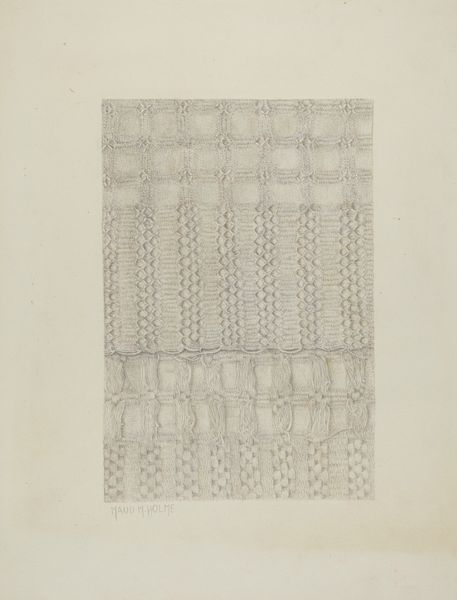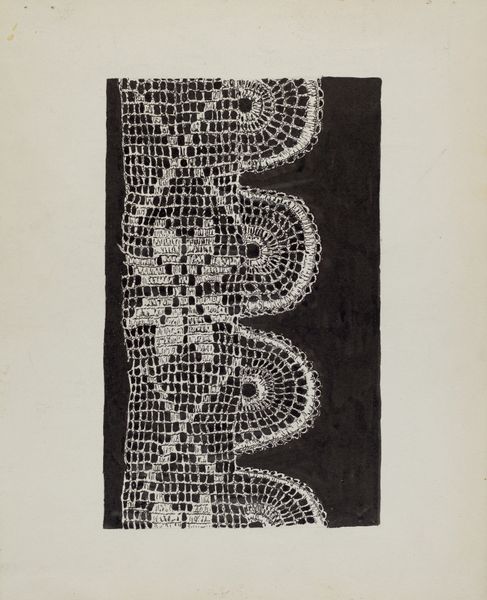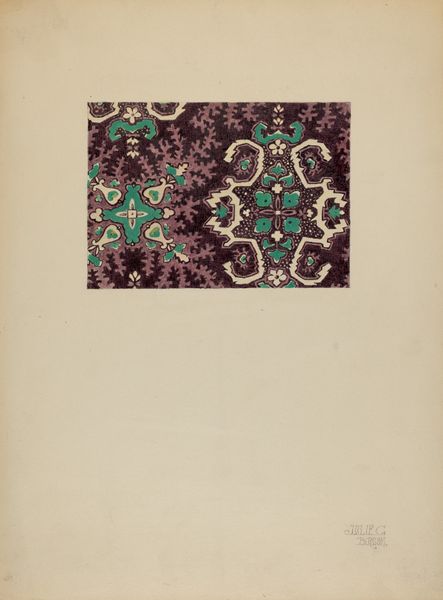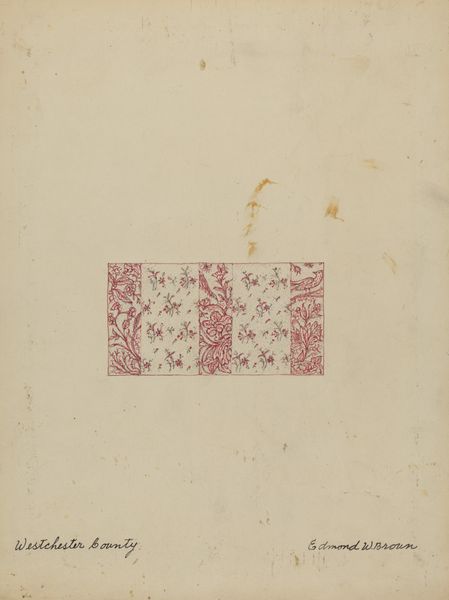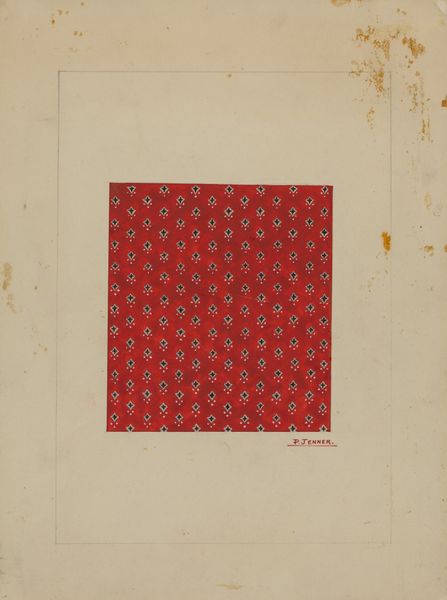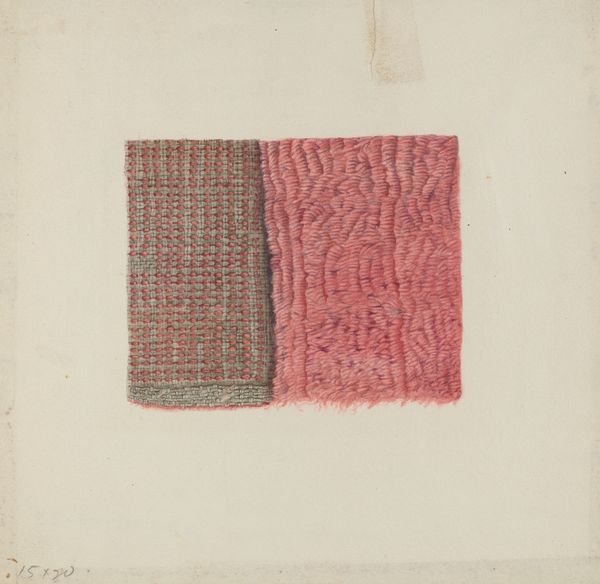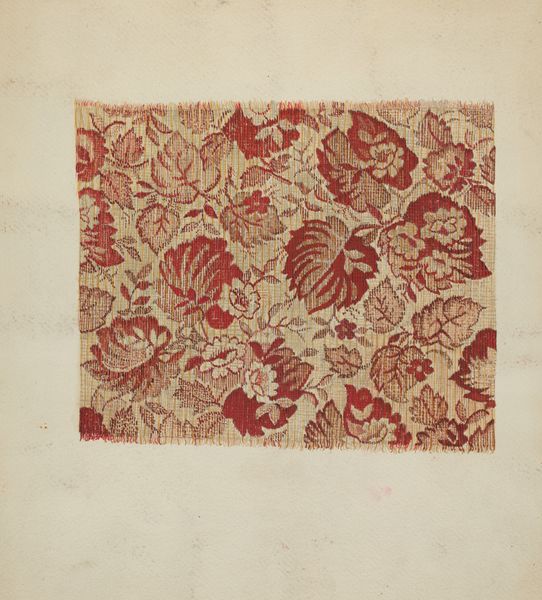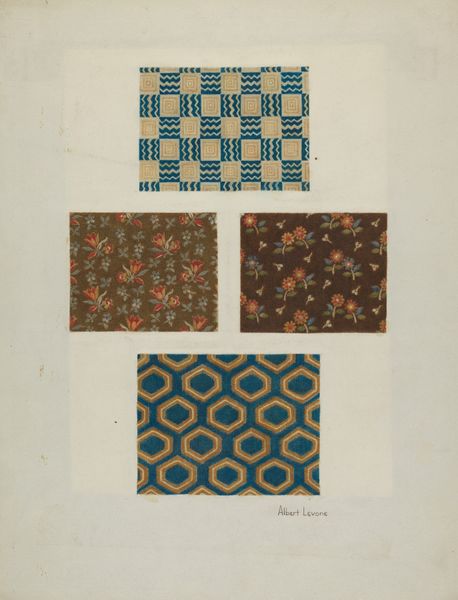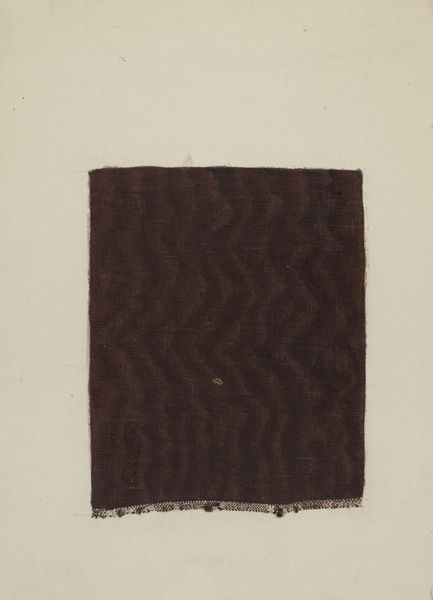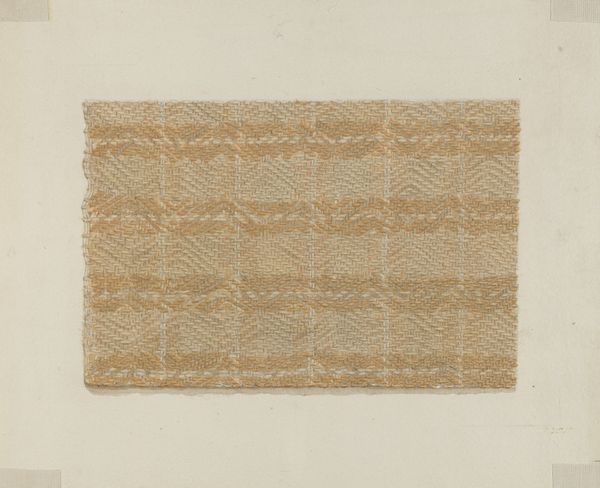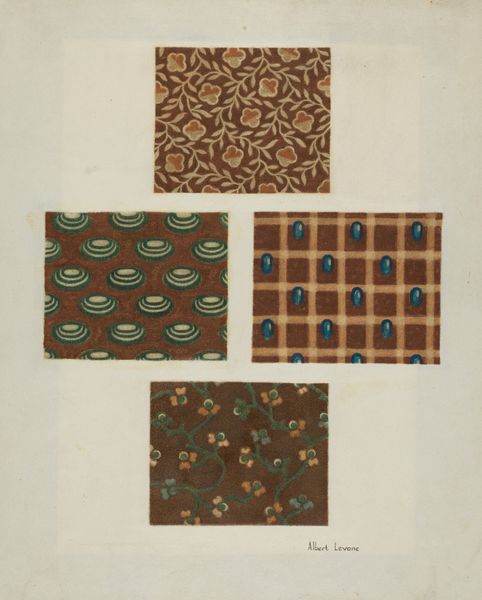
textile, paper
#
water colours
#
textile
#
paper
#
geometric
#
watercolour illustration
#
watercolor
Dimensions: overall: 29.5 x 23.1 cm (11 5/8 x 9 1/8 in.)
Copyright: National Gallery of Art: CC0 1.0
Curator: Here we have Edward D. Williams’ "Printed Cotton Swatches," dating from between 1935 and 1942. The work appears to be watercolor illustrations on paper of textile designs. Editor: My first thought is the charm of their muted colors. They’re small, intimate, and surprisingly compelling given how repetitive the patterns are. It makes me think about the tactile quality of the textiles, though we only see them rendered as images. Curator: It’s fascinating to consider these swatches within the broader context of textile design during that period. The late 30s and early 40s saw significant shifts in fashion and home decor, influenced by both economic realities and artistic movements. What role do you think these kinds of designs played in shaping visual culture? Editor: They are interesting in the way they demonstrate the relationship between artistic intention and industrial processes. These designs, potentially intended for mass production, reflect the skill and labor involved in creating patterns that would eventually be printed onto fabric and consumed on a massive scale. Did Williams have ties to specific mills or factories? Curator: Unfortunately, detailed information about Williams’s specific commissions remains elusive. However, one can assume, given the era, these designs likely catered to middle-class tastes, perhaps aiming to bring affordable, stylish textiles into everyday life. Editor: Right, and let's think about the medium—watercolor. There's a deliberate, perhaps even subversive, act in using such a traditional medium, often associated with "high art," to render designs destined for textiles, traditionally considered "craft." Williams seems to challenge those boundaries. Curator: Absolutely, and consider how the geometric forms used here resonated with the burgeoning modernist aesthetic. But also how such imagery might’ve provided visual comfort during the turbulent years surrounding the Second World War, an appeal to order and stability. Editor: The way these samples are presented as flat images, devoid of any three-dimensionality, emphasizes their potential as commodities. Their artistic value becomes intertwined with their functionality, destined for clothing or household goods. This really forces us to reflect on how we attribute artistic value based on process and context. Curator: Indeed, Edward D. Williams’ work compels us to contemplate the dynamic interplay of design, manufacturing, and society—shedding light on a unique intersection of art and industry during a transformative epoch. Editor: It is an interesting glimpse into the lives and priorities of this era and into the meeting point between industry and craft.
Comments
No comments
Be the first to comment and join the conversation on the ultimate creative platform.
